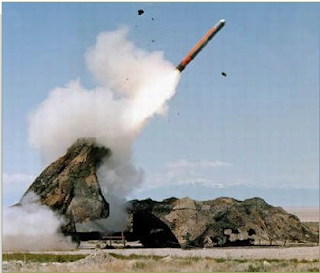Hong Niao-1 (HN-1), HN-2 and HN-3 longer-range
This evolved into the Hong Niao-1 (HN-1), which began development in 1988, and later the longer-range Hong Niao-2 (HN-2), which was first thought to have been tested in either 1995 or 1997, with a ground-launched test in August 2001. The HN-2 is more commonly known as the DH-10, and is modeled on existing U.S. and Russian technologies.
The DH-10 is based largely on U.S. Tomahawk cruise missile technologies obtained by aggressive PLA buyers in Iraq, Serbia and Afghanistan and elsewhere U.S. Tomahawks, or parts thereof, have been lost. China is reported to have acquired at least two unexploded Tomahawk missiles from Osama bin Laden after the U.S. fired 75 Tomahawks into Afghanistan on August 20, 1998 in a failed attempt to kill him.
Aside from reverse engineering U.S. technology, China’s DH-10 has also thought to have benefited from an improved turbofan engine based upon the Russian TRDD-50 engine used in the SS-N-21 and AS-15 missiles, which began manufacture in China after 1992. China’s procurement of at least six Kh-55 Russian Raduga cruise missiles from Ukraine in the 1990s is also thought to have provided key technology for the development of the DH-10.

It has also been reported that in 1992 China established the Xinxin Factory in Shanghai with Russian expertise and equipment to develop air and submarine launched LACMs. Similarly, it has been alleged that in 1995 China hired and moved a Russian design team to Shanghai as part of a cruise missile manufacturing technology procurement effort which opened the door to the transfer of radar and infrared signature-reduction technology. These reports suggest that Shanghai has played an important role in the development of China’s second and third generation LACMs, though the claims are yet to be validated.
It is known that the Hong Niao-3 (HN-3) or DH-10A, a stealthier, more accurate HN-2 upgrade, was successfully tested on August 10, 2004. The DH-10A is reported to have a circular error probability of less than 10 meters, and relies on a combination internal navigation system (INS), global positioning system (GPS) and terrain comparison (TERCOM) for guidance. It has gone into mass production and is deployed with the PLA’s Second Artillery Corps.
The latest generation DH-10A is also believed to be deployed on China’s H-6K bomber, a re-engined and improved variant of the Xian H-6 that has six underwing hardpoints to carry large air-to-surface missiles. Images released on the Chinese internet show the H-6K carrying missiles roughly the same size and shape as the Tomahawk, with a “pinched” nose cone profile like the Tomahawk Block IV, making it more stealthy.














0 comments:
Post a Comment